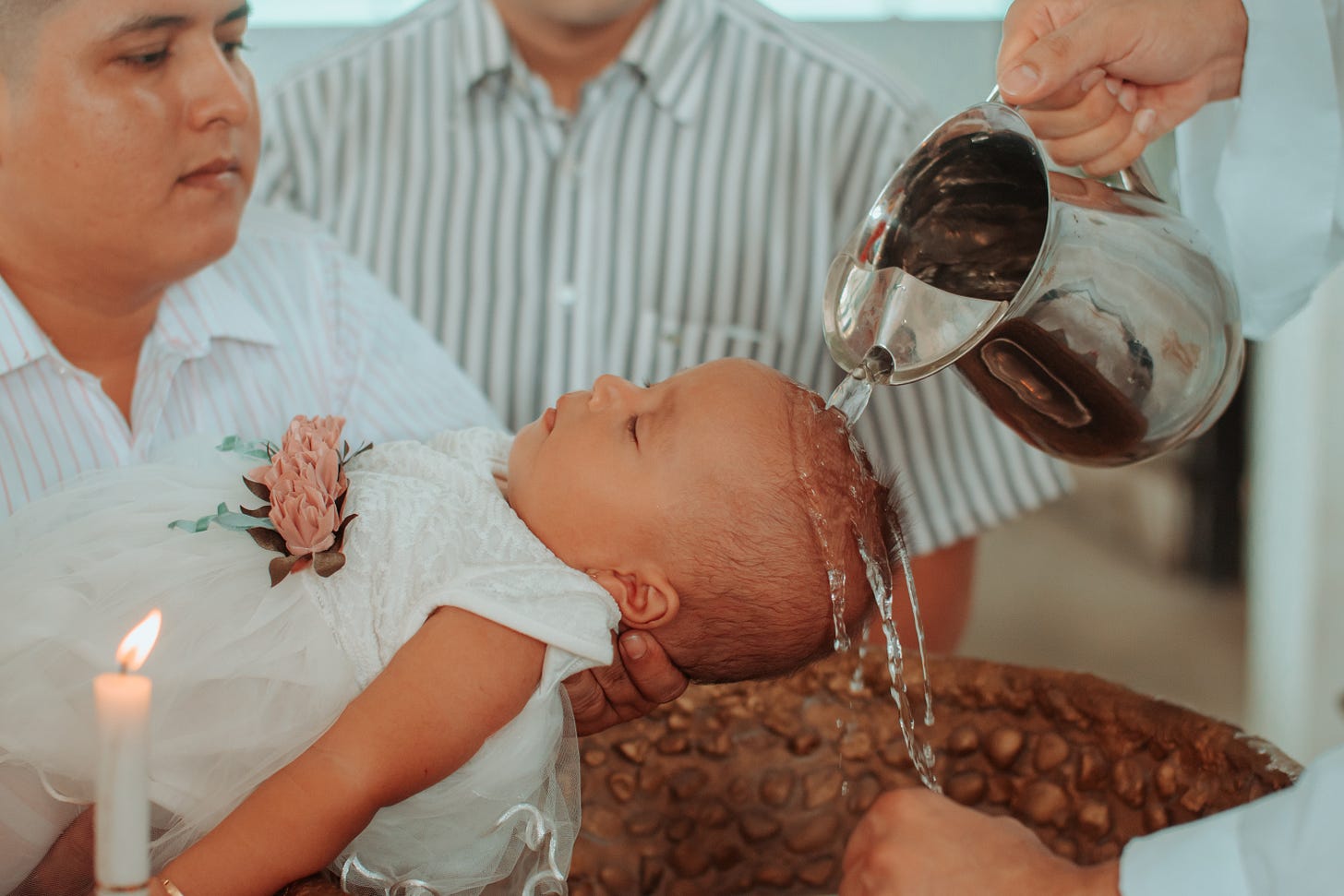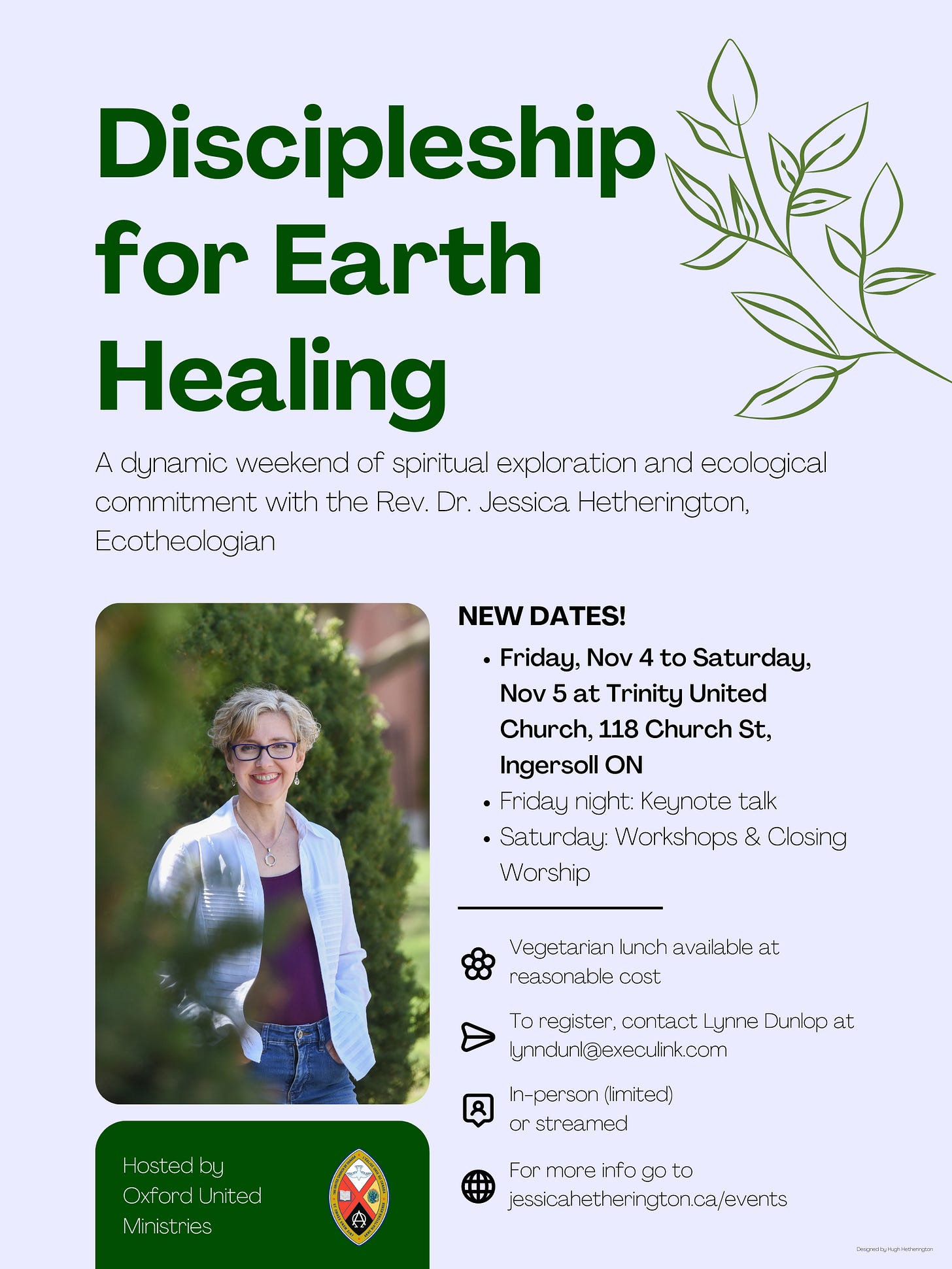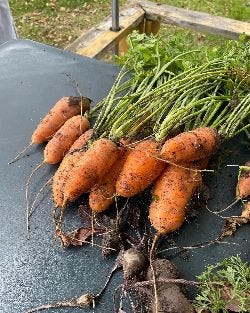The Water of our Baptism: More than Symbol

Scripture Reflection
13 Then Jesus came from Galilee to John at the Jordan, to be baptized by him. 14 John would have prevented him, saying, ‘I need to be baptized by you, and do you come to me?’ 15 But Jesus answered him, ‘Let it be so now; for it is proper for us in this way to fulfil all righteousness.’ Then he consented. 16 And when Jesus had been baptized, just as he came up from the water, suddenly the heavens were opened to him and he saw the Spirit of God descending like a dove and alighting on him. 17 And a voice from heaven said, ‘This is my Son, the Beloved, with whom I am well pleased.’ (Matthew 3:13-17, NRSV)
Here we have the story of Jesus being baptized by John the Baptist, in the Jordan River. Those of us who are Christian or grew up in the Christian church know the story well. John was baptizing people before Jesus, but promised that someone would soon be following him who would baptize them not just with water, but with “the Holy Spirit and fire” (Matthew 3:11b). While John couldn’t understand why the Messiah needed to be baptized, since what sins would need to be cleansed, what repentance would be needed by the Son of God? Yet Jesus insisted that it was right and true for him to be baptized. And, as we read in this text, Jesus’ baptism is affirmed by the Spirit descending upon him, and the voice of God saying, “This is my Son, with whom I am well pleased.”
Jesus’ baptism has become the model for all of us, and so, whether we are baptized as infants in some traditions, or as believers able to make our own commitments to the church when we are older, whether we experienced a full immersion in a pool or living body of water, or feel the gentle sprinkling of water on our foreheads, to be Christian means to be welcomed into the church, the Body of Christ, in this way.
Have you ever given thought to the water with which you were baptized? Or the water that was used to baptize your children, your grandchildren? Was it a body of water near the church, such as a lake or river? Was it in the river Jordan, where Jesus was baptized? Was it a combination of water, taken from different places in the world, where parents and grandparents are from? Or, was it tap water taken from the church kitchen?
No matter which water was used to baptize you, or to baptize those in your life, it was living water. Whether fresh in the lake or filtered before moving through a tap, that water is part of the water in the region in which you were baptized, part of the water in the watershed where the church resides. Maybe, if the water was a collection from various places in the world, it was water from several watersheds.
Jesus was baptized in the river Jordan. He was fully immersed in that water by John. He rose up out of that water, with it soaking his clothes and streaming down his face. He rose up, out of that living water, to be anointed by the Holy Spirit and to initiate the rest of us, throughout Christianity, into the faith.
This isn’t the only time that Jesus had powerful experiences with and in water. Jesus would calm storms and walk on water. He would eat the fish that came from water, drink the wine he transformed from water, heal others with water. For Jesus, water was a tangible, living entity that marked the terrain in which he lived. The Jordan River is the name of the watershed that river is located within; it is the Jordan that would shape and form the landscape, the flora and fauna that existed in first-century Palestine (and still today). Jesus knew where he was, and was indeed formed in his human identity, through the Jordan River.
What about the waters that have baptized us and our loved ones? Do we know the names of those waters? Do we know where they flow from and where they go, what watershed they exist within, and how they affect the topography of the places in which we live and worship? Indeed, most of us know the water in which Jesus was baptized better than we know our own, for who can name where the waters have come from that were used to baptize us?
We use water as a symbol for cleansing, healing, new life, in the Christian tradition. Yet water is more than a symbol; indeed, it was more than a symbol for Jesus, who interacted with its physical reality time and again in his ministry. Water is water; it is a liquid that all in the Earth community need to live. Ideally, it is clear and free of impurities. While that is the case for many of us reading this, it is not the case for many people around the world, and here on First Nations reserves in Canada. Ideally, water is free and free-flowing, a need and right for all. And yet, so many people around the world struggle for fair access to water. Indeed, the loss of potable water is one aspect of the ecological crisis, as aquifers are drained for companies using gigantic quantities for manufacturing or bottling, and as waterways are poisoned, unfit for human and non-human consumption. As well, through droughts and weather extremes, human communities are becoming increasingly vulnerable to the lack of water to grow crops, drink, and clean themselves.
So, then, how does our use of the symbol of water in our faith tradition, in the sacrament of baptism, and in other ways in our liturgies, need to be informed and transformed by paying attention to the living waters that we use in baptism? How might learning about the living bodies of water we are drawing that water from affect us and our faith? How might our understanding of Jesus, and the call to know and care for the lakes and rivers in our watershed, be impacted if we consider more seriously the relationship that Jesus had to the waters in his watershed? How might it affect our theologies, when we realize that water is more than just a symbol to our Christian faith and practice, but is a living reality, made to give and nourish life, but so threatened right now. Indeed, water is the living reality that streamed down Jesus’ face when he rose up from baptism, and marked each of our baptisms, and calls us all to discipleship.
Announcements
I can’t wait to head down to Ingersoll, Ontario for the learning event “Discipleship for Earth Healing” November 4-5, 2022. I hope you can join us, either in person or online! Go here to find out more and to register: https://www.jessicahetherington.ca/events/.
Before that, though, I will be joining the Manitou Intentional Learning Community, via Zoom, for my upcoming Talk: “More Than Care for Creation: Responding as Church to the Ecological Crisis” on Wednesday, October 26, 7:00 pm. For more information go to: https://www.manitoulearningcommunity.com/2022/09/17/more-than-care-for-creation-responding-as-church-to-the-ecological-crisis/.
BLOG POST: As You Sow: A Scripture Reflection on Galatians 6:7-10
Find it here: https://jessicahetherington.ca/blog/






